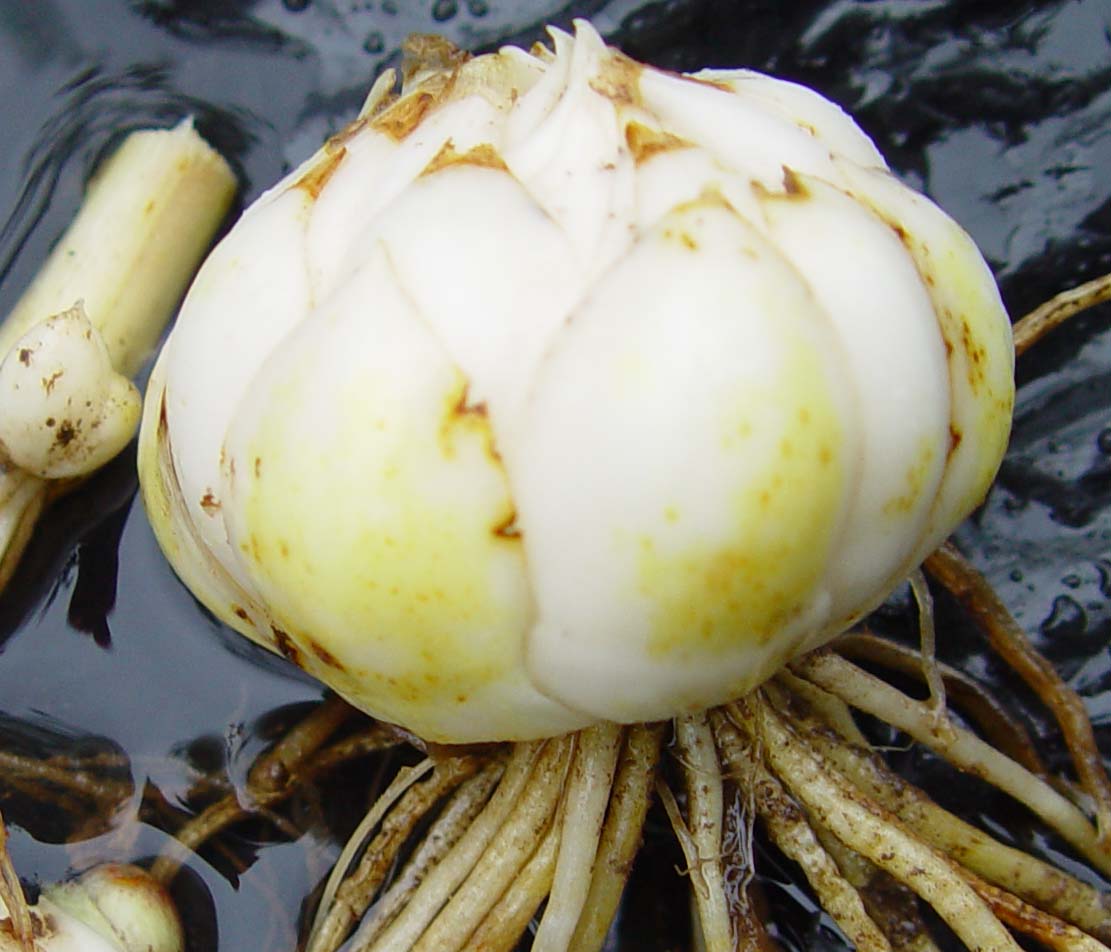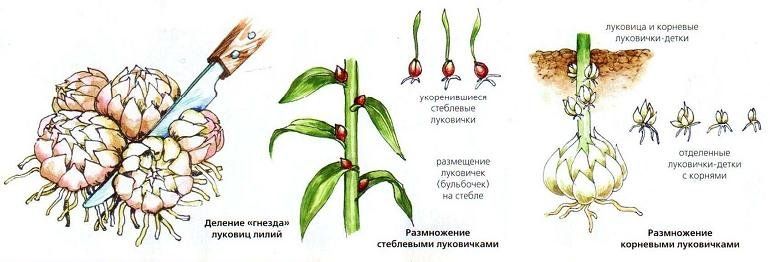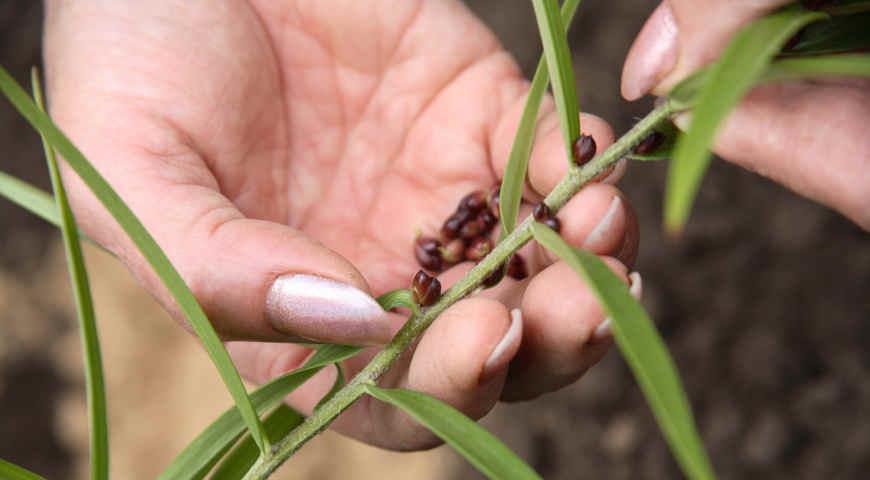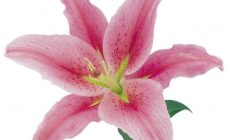Content:
OT lilies are complex interspecific hybrids that are obtained by crossing tubular lilies with oriental (oriental) lilies. They are the achievement of American breeders, were bred in 1952 and received the abbreviated name OT.
Description of colors
Lilies OT hybrids have strong stems that can reach 2 m. Up to 30-40 peduncles are formed on one stem. Large-sized flowers reach 20-30 cm in diameter, have a wide-chalmoid, chalmoid or tubular shape. The aroma is pronounced. In autumn, seed pods ripen on the stems.
OT hybrids have good immunity to most diseases and winter hardiness.
All hybrid varieties of lilies are of incredible variety. Although OT hybrids are generally more finicky and capricious than LA hybrids. They are larger and differ in the presence of aroma. You will have to take more care of them. Under favorable conditions, they develop well and delight with their flowering.
Popular varieties
Today on the market there is a large assortment of varieties of OT hybrids lilies. Their lush bloom will leave no one indifferent.
- Double Yellow variety. Terry lilies with pale yellow flowers. Aroma with a lemon note.
- Lily Boogie Woogie. The maximum height of the plant is 120 cm. The flowers are large, pale yellow with an orange-pink border around the edges of wide, curled petals. Has a pronounced aroma. Duration of flowering 15-20 days. This variety is suitable for cutting (flowers in a bouquet remain fresh for about 2 weeks).
- Lilium Conca d Or cultivar - fragrant flowers of light yellow color with creamy white edges up to 29 cm in diameter. Long flowering period (up to 100 days).
- The OT hybrid Robin variety can be attributed to the so-called lily trees, since the plant height is up to 150 cm.The flowers are large (up to 25 cm in diameter) with shades of white, red, purple. Duration of flowering 2-3 weeks.
- Lily OT hybrid Elusiv. A flower up to 25 cm in diameter has an amazing aroma. The plant forms up to 30 inflorescences.
- Lily Hi Ti has white flowers with an orange-yellow center and dark orange anthers. Lilia Hi Ti is an OT hybrid characterized by very large flowers (up to 25 cm in diameter). Up to 30 inflorescences are formed on one stem. A perennial grows by 3 years up to 1.2 m.
- Scheherazade variety is a giant species of Dutch selection. Its height is up to 2.5 m. These are exotic flowers of a reddish-burgundy hue in a light yellow core.
Reproduction of OT hybrids of lilies
The main methods of flower propagation:
Reproduction of OT hybrids by bulbs
From the renewal buds present on an adult bulb, new full-fledged bulbs are periodically formed. The best time for a transplant is August. Before transplanting, the stems of the plant are cut, leaving small hemp (15-20 cm). For the prevention of diseases, bulbs are treated with a solution of potassium permanganate. This is the fastest breeding method for all lily varieties.
Reproduction by children
Lilies are characterized by the formation of small bulbs (children). They are separated from the adult bulb during transplantation.It is better to plant children for growing on a separate bed, which it is desirable to cover for the winter.
Reproduction by scales
To separate the scales, dig out a lily bulb and carefully separate them. The upper large scales are suitable for reproduction. You can do this without digging out the bulbs, removing the top layer of soil. You need to trim the scales very carefully so as not to damage the bulb itself. The resulting planting material should also be processed in a potassium permanganate solution. Next, the flakes are placed in a plastic bag with a damp substrate. Within 1.5-2 months, small bulbs are formed on them.
Bulb propagation
Bulbules are airy bulbs that ripen in the axils of leaves on the stem closer to autumn. They are easily detached from the mother plant. Having separated, the bulbs, as well as the children, are treated in a solution of potassium permanganate for 1.5-2 hours. Then they are planted in rows with a step of 20 cm and at a distance of 5-6 cm from each other to a depth of 3 cm. For the winter, the bed is covered spruce branches, fallen leaves or sawdust. The plant will bloom for 3 years. This method allows you to preserve all the properties of the mother plant.
Landing
OT hybrids will show their best in a sunny area protected from drafts. The soil should be loose and fertile. When planting, sand is added to clay soil. Whichever site you choose for planting a lily, even the most distant one, it will not go unnoticed.
The optimal time for planting hybrids in open ground is April-May or September-October.
An indicator of good quality planting material is clean and firm bulbs.
The size of the wells depends on the size of the bulbs. A drainage layer is poured onto the bottom of the hole. When planting lilies, the roots of the bulb are well spread, and then it is advisable to sprinkle it with sand. It will take on excess moisture and prevent the bulb from rotting.
Further care
Caring for OT lilies is no different from that which is needed for ordinary flower varieties:
- In the absence of enough rain, the hybrids are regularly watered. Watering is especially important in the first half of summer.
- Mulching the plantings will help maintain the necessary soil moisture and prevent the spread of weeds.
- For lush flowering, lilies need feeding. In the spring, they are fed with complex mineral fertilizers. During the formation of buds, you need to repeat the procedure. Potassium-phosphorus fertilizers are applied in autumn.
- In the first year after planting, it is advised to cut peduncles from hybrids. In subsequent ones, faded inflorescences are promptly removed to stimulate the appearance of new ones. It is important to cut off the stem in the fall so that in winter it does not become a conductor of cold to the bulb.
- Long-term cultivation of lilies in one place leads to crushing of inflorescences and loss of decorativeness. To avoid this, it is recommended to plant flowers every 4-5 years.
- The main pests of OT hybrids are lily beetle, lily fly, aphid. To combat them, use drugs thunder, grizzly, fly eater.
- From diseases in lilies, fusarium or wet rot can appear. These ailments are usually the result of improper watering. For treatment I use fungicides such as scor, topaz, and foundation.
Hybrid lilies are the favorites of many gardeners. They have been able to delight with their delightful flowering for many years. But in order to achieve this, you need to choose the right varieties, adhere to agricultural techniques, provide proper care, and protect against pests and diseases.

















